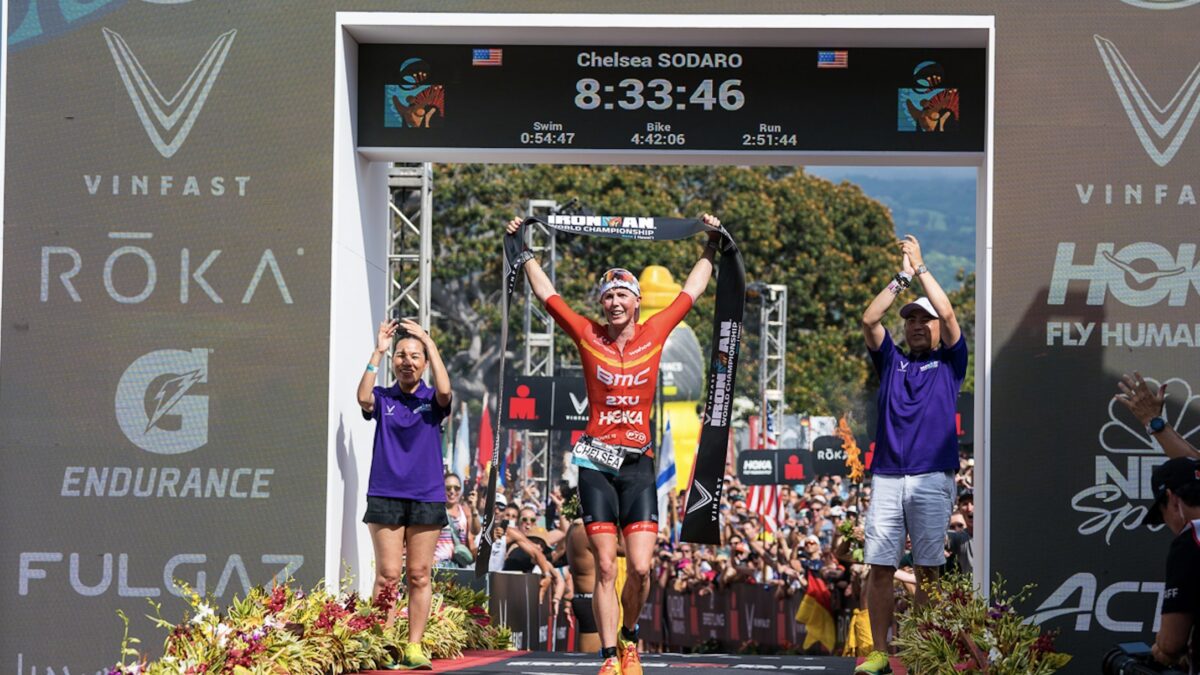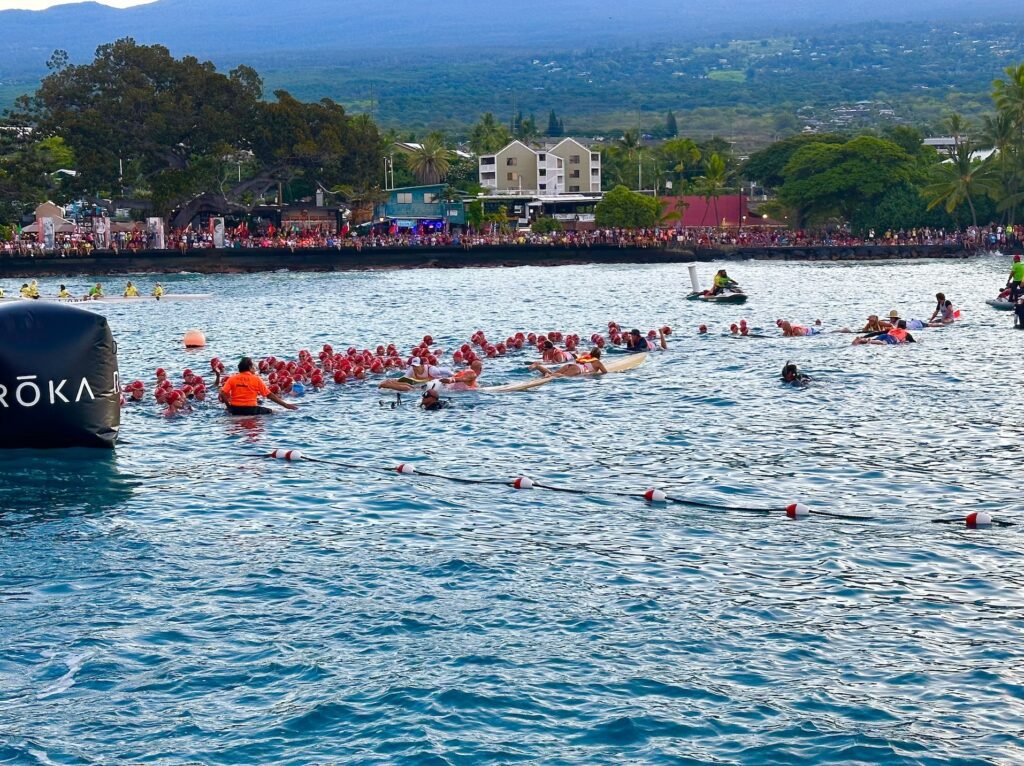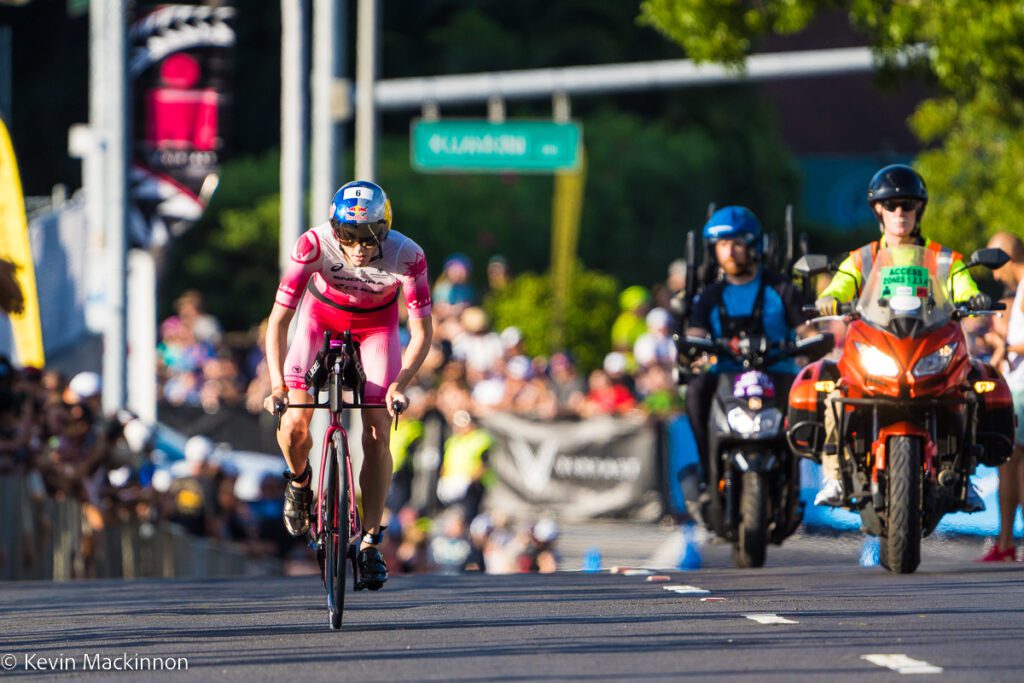Kona coverage: Yes, a women’s only race made it easier to qualify. And, yes, that’s good for the sport
Athletes are looking forward to a unique race here on the Big Island
 Photo by:
Kevin Mackinnon
Photo by:
Kevin Mackinnon
It is the sport’s Wimbledon. It’s the reason other race series can’t achieve a similar foothold in the sport. When triathletes come into the office the weekend after their big race, they tell folks they just did an Ironman.
“You mean like that one in Hawaii?” is the inevitable question. While a precious few get to say “Yes” to that, for those who just finished Ironman Mont-Tremblant or Ironman Arizona, they get to tell everyone it was a qualifier for the famous event in Hawaii.
How many of you can tell me everything there is to know about Julie Moss’ crawl to the finish line on the Big Island in 1982? Anyone remember Paula Newby-Fraser dealing with cramps so bad at the Nice International Triathlon that she had to start pedalling her bike with one leg? Anyone else remember that Mark Allen collapsed just short of the finish line in Nice in 1983, managing to walk his way across the line for his second win?
Yeah … I’m guessing you knew about Moss’ race, and you didn’t know about the others. There’s a reason triathletes from around the world clamour for the chance to compete in Kona. The event is simply legendary.

Women only
Unless you’ve been living under a rock for the last 10 months or so, you’ll know that Ironman found itself in a no-win situation last year after hosting two days of racing on the Big Island. With a record field of over 5,000 competitors racing on Thursday (women and a few men’s age groups) and Saturday (the rest of the men), it was an historic week of racing. Unfortunately, it was simply too much for the community of Kailua-Kona, who have been gracious hosts of the Ironman since 1982, but simply couldn’t stomach another weeklong ordeal of traffic jams and disruption.
One day is fine. Two days is not an option, the community made abundantly clear.
Which is how Ironman ended up with two full-distance world championship events in 2023, and will do so for the foreseeable future. This year the men competed in Nice in September, while the women get to race in Kona in October. Next year they reverse venues.
Additional slots
The two venues means that there are more qualifying slots available for men and women at the Ironman World Championship races. Ironman has struggled, though, to get the numbers they’ve been hoping for. Roll downs for both races went incredibly deep, with some races not even handing out all the qualifying slots available, and others seeing slots go to some of the day’s final finishers.
This morning I overheard a woman saying that initially she was annoyed that, for many, it has been much easier to get to Kona this year.
“I had to win my age group to get here,” she said. But she quickly followed that up with a positive take on this year’s race. If it means that more women get to experience this incredible event, and those women can inspire others to get involved in the sport and strive to compete at the Ironman World Championship, that is great for the sport.
Women’s week
Ironman CEO Andrew Messick pushed hard for a second day of Ironman World Championship racing to give the women a chance to have their own day in the spotlight. When things went south on two days of racing in Kona, he wasn’t willing to let the women’s only day go. It’s important to the sport – he feels, as do others.
Just ask last year’s 60 to 64 world champion Sharon Mackinnon (yes, in full disclosure, my wife) – even with a limited number of men on the course in Kona last year, she noticed a distinct difference in the atmosphere of the day compared to the Ironman 70.3 World Championship in St. George three weeks later where she got to race with women only.
“It is such a great, positive, experience,” Mackinnon said of the women’s only race day. She’s looking forward to repeating that experience at a full-distance world championship next week.
Splitting the venues adds another component to race week, too. Suddenly there’s the opportunity to really focus on women’s racing – the Expo will have a special women’s focus, activities can be organized with women in mind, and much more.

Women’s coverage
As we experienced last year with the pro women competing on Thursday, the race day coverage was focussed exclusively on the women. That will, once again, be the case this year, with the bonus of the women competing on Saturday rather than a traditional workday.
Triathlon has a rich history of equality when it comes to women’s racing. Prize money is the same. While the men’s Tour de France spans three weeks, the women’s race is an eight-day affair. Women have always raced the same distance as the men in triathlon.
As record numbers of fans are tuning in to watch the Women’s World Cup in Australia and New Zealand, hopefully we’ll see a record number of fans tune in to watch the best long-distance athletes in the world compete in Kona this year.
Stay tuned for more of our coverage from here in Kona.
